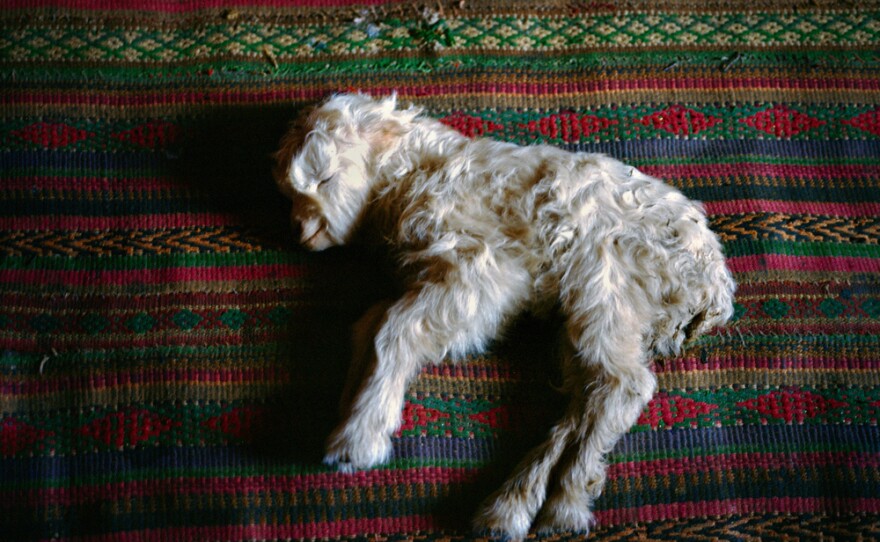Over the past decade, China has been on an infrastructure tear, investing hundreds of billions of dollars in transportation expansions. According to The Wall Street Journal, some 30,000 miles of expressway were paved in the 10 years before 2008, and future plans indicate China's highways will stretch 53,000 miles by 2020 — surpassing the 47,000 miles of interstate currently in the U.S.
While some focus on what these roads will bring to China's economy, Japanese photographer Go Takayama is more interested in what that means to people — especially those in some of China's most remote western regions, like the Xinjiang Uyghur Autonomous Region. Many ethnic minorities there, such as the Kyrgyz, have sustained a traditional nomadic way of life — until now.
Takayama had read an article about plans for a highway that would stretch through western China into Kyrgyzstan. A few months later, he was driving toward Kyrgyzstan and picked up a hitchhiker "on the terms that I could follow him to his destination," he says.
That's how Takayama first encountered the Kuruman family, traditional Kyrgyz nomads, whom he has been documenting for the past two years. The family consists of a mother and father who have retired from the nomadic life and settled in a mud-and-thatch village; and their four children, who largely continue a life of movement, spending winters high in the Tianshan mountains and relocating again in the spring.
According to Takayama, villages like the one where the Kuruman parents have retired are slowly being transformed into towns with "fast-developing residential apartments, high-end housing and new factories."
Essentially, he says, the Kuruman family, descended from generations of nomads, will soon be living within an urban community. "They will be given an address and probably a mailbox for ... [an] apartment with running water for [the] kitchen, toilet and shower."
To document the Kuruman family's story, Takayama treks up into the mountains to spend time in their mud-and-thatch houses heated by coal stoves. He joins them on a motorcycle descent through snowy valleys into small villages and attends weddings in apartment buildings — in what he describes as fast-growing towns.
The photo essay presented here barely scratches the surface of a big, complicated story. It's a glimpse at a place you might never have otherwise seen, and a cursory introduction to the people who live there. But below the surface is a universal take-away, which Takayama finds resonant with his own culture.
"The other day," he says, "I was wondering how many of my Japanese friends know or care about how to make traditional Japanese-style hairdos. I believe it ... might be none. I know things don't stay the same. I'm not there to make my own judgment, but rather to document what's about to happen."
Copyright 2021 NPR. To see more, visit https://www.npr.org.


















